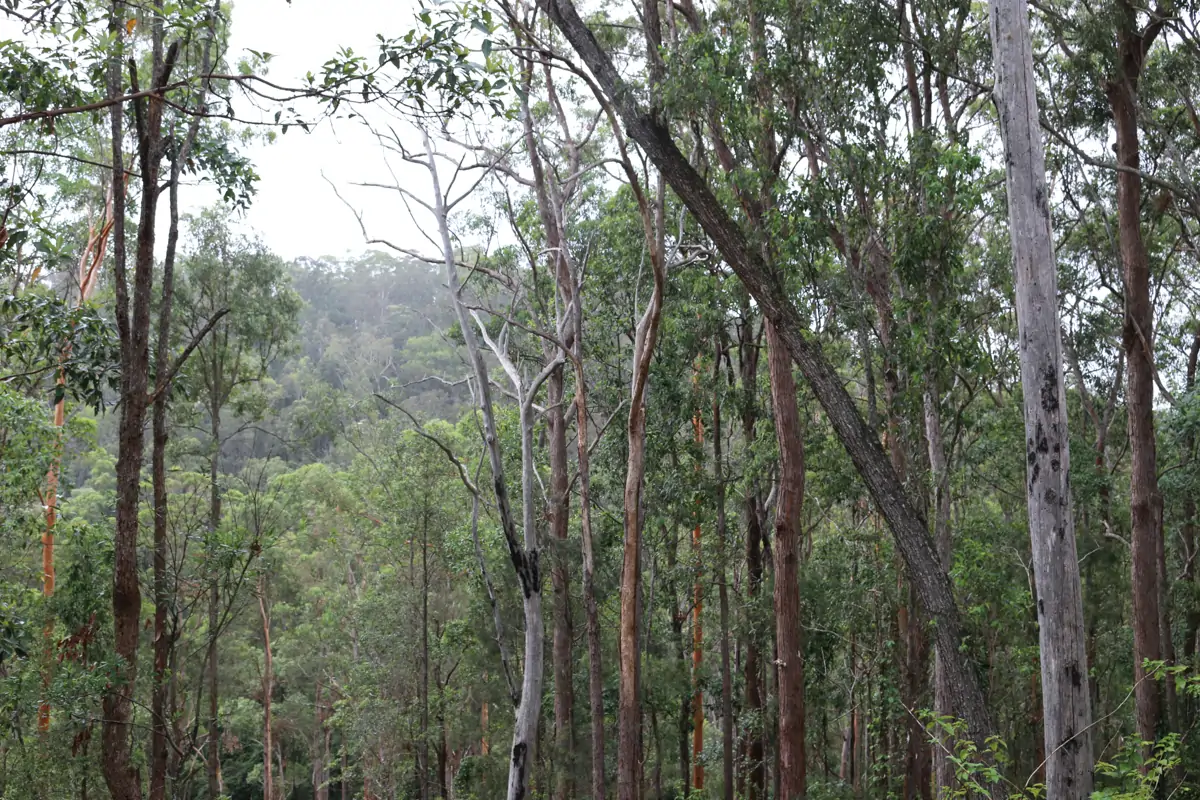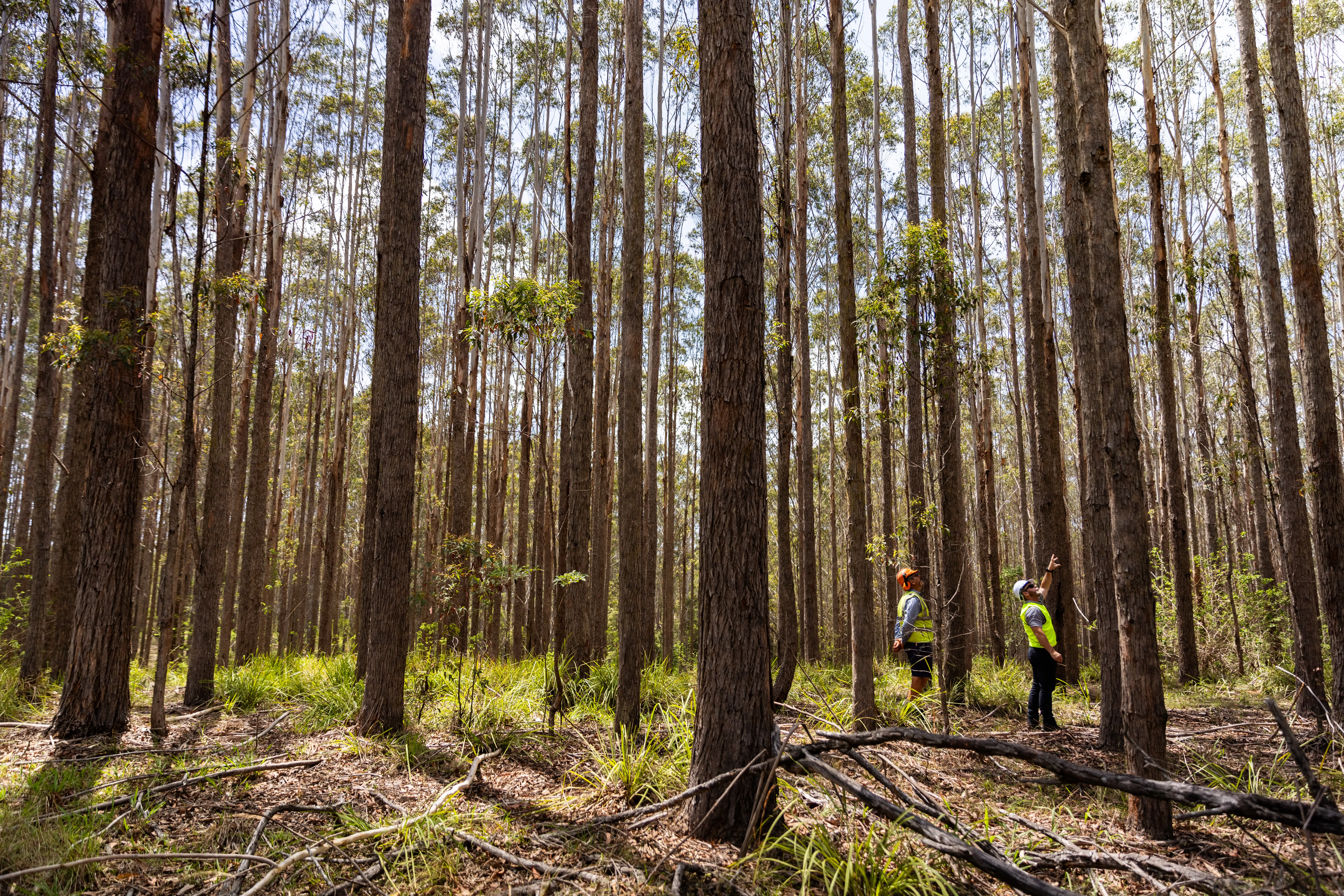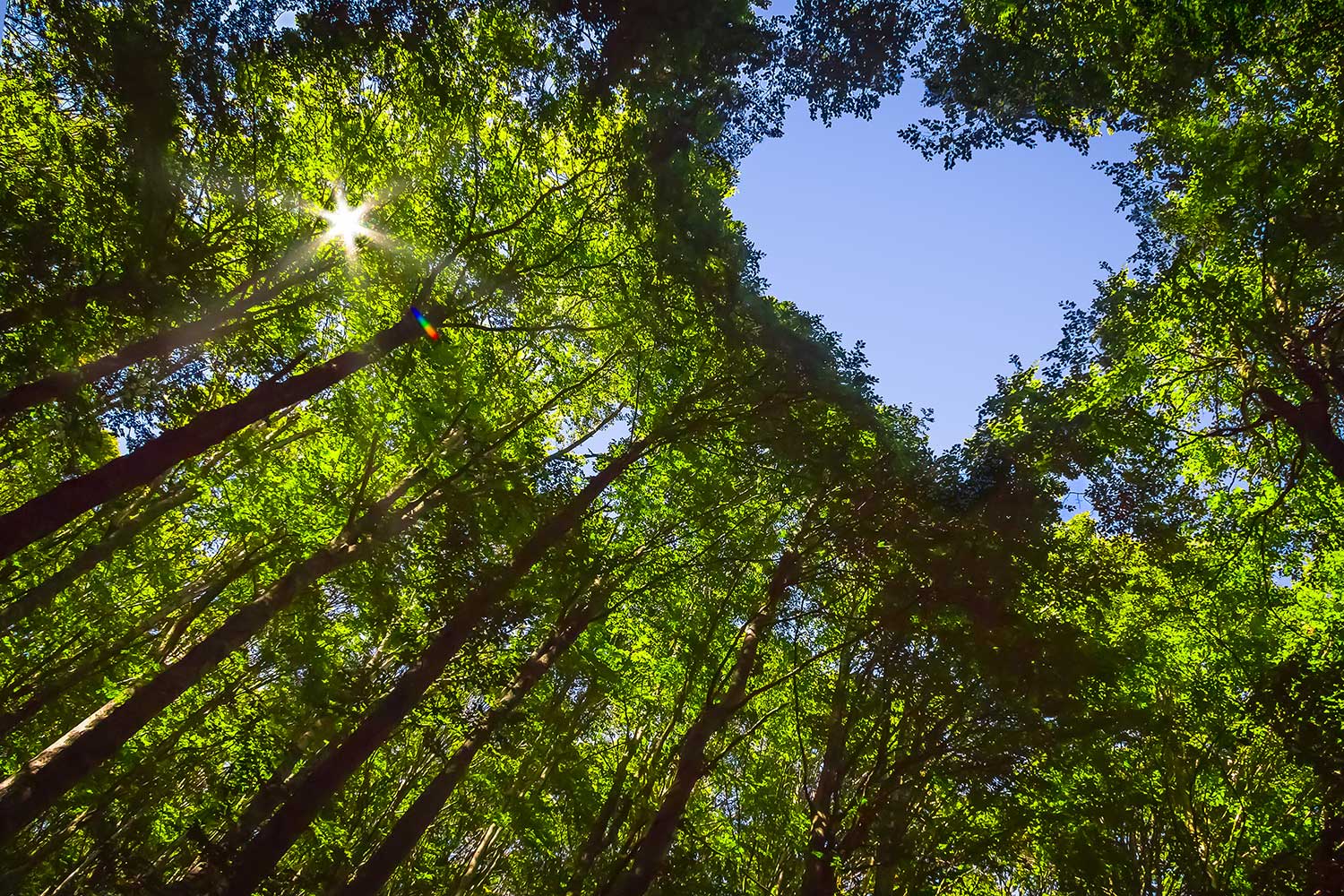We’ve created this helpful guide to Australian forestry industry acronyms and commonly used forest management and timber related terms and their meanings.
A
- Active Management: The hands-on approach to forest management involving activities like thinning, burning, or logging to maintain forest health and productivity.
- AFPA – Australian Forest Products Association: The national body representing Australia’s forest, wood, and paper industries, promoting sustainable forestry practices.
- Agroforestry: The integration of trees and shrubs into agricultural land, combining forestry and farming practices for enhanced land productivity and environmental benefits. Read more in our blog: Agroforestry Benefits of SFM.
- Allowable Activities: A range of routine land management activities associated with agriculture and other common practices in rural areas. Clearing for allowable activities does not require approval under the Local Land Services Act 2013
- Australian Group Selection: A silvicultural practice involving the removal of small groups of trees to create openings in the forest canopy, encouraging regeneration and a mosaic of mixed age forest.
B
- Basal Area: A measurement of the cross-sectional area of trees per unit of land, typically used to assess forest density.
- Bioenergy: Renewable energy produced from organic materials (biomass), such as wood, forest residues, and other plant materials. Read more in our blog: Bioenergy – How the timber industry is contributing to a growth in renewables.
- Biofuel: Fuels derived from organic matter (biomass) such as plant materials, including wood, that can be used as an alternative to fossil fuels.
- Biomass: Organic material from plants or animals, used as a source of renewable energy or to enhance soil fertility in forestry and agriculture.
C
- Canopy: The upper layer of trees in a forest, consisting of tree crowns, which provides habitat, regulates temperature, and influences the forest’s ecosystem.
- Carbon Sequestration: The process of capturing and storing atmospheric carbon dioxide in trees, soil, or other forest products to mitigate climate change.
- CLT – Cross-Laminated Timber: A sustainable building material made by layering timber boards at right angles, known for its strength, durability, and use in construction.
- Cool or Cultural Burn: A traditional method of controlled burning, typically practiced by Indigenous peoples, to manage vegetation, reduce fuel loads, and promote ecosystem health. Read more in our blog: Cultural burns & sustainability.
D
- DAFF – Department of Agriculture, Fisheries and Forestry: The Australian government department responsible for managing Australia’s natural resources, including forestry, agriculture, and environmental policies.
- Dry Forest: Forests characterized by low rainfall, often dominated by drought-tolerant species like eucalyptus, with a significant risk of bushfire.
E
- EPA – Environmental Protection Authority: An independent statutory authority that monitors and regulates environmental activities, including those in forestry, to protect ecosystems and public health in New South Wales.
F
- Farm Forestry: The management of forests on private farmland for timber, environmental benefits, and additional income, often integrated with other farming activities.
- FMP – Forest Management Plan: A detailed plan outlining how a forest area will be managed, including conservation, harvesting, and regeneration activities over time.
- Forest Condition: The health and vitality of a forest, including factors like biodiversity, tree density, and resilience to environmental stresses.
- Forest Debris: Organic material such as fallen branches, leaves, and dead trees left on the forest floor, important for nutrient cycling and habitat creation.
- Forest Monitoring: The ongoing observation and data collection on forest conditions, often using technology like GIS, to guide management decisions.
- Forest Type: Classification of forests based on dominant tree species, climate, and geography, such as wet or dry forests, or hardwood versus softwood forests.
- Forestry: The science and practice of managing and conserving forests for timber production, environmental protection, and other resources.
- FSC – Forest Stewardship Council: An international organisation promoting responsible forest management through certification, ensuring that forests are managed sustainably.

G
- GIS – Geographic Information System: A system used to capture, analyse, and display spatial data, often used in forestry for mapping, monitoring, and management planning.
- Green wood: Wood that has not been dried or seasoned, containing its natural moisture, typically used in construction.
H – K
- Habitat Tree: A tree left standing in harvesting operations due to its provision of wildlife, habitat for birds and animals such as koala, possum, gliders or bats.
- Hardwood: Timber from broadleaf trees, typically denser and stronger than softwood, commonly used in construction, flooring and fencing.
- Harvesting: The process of cutting and removing trees for timber, paper, or other wood products, done sustainably under heavy regulations and management plans.
L
- Land Clearing: The removal of vegetation, including trees, from land for agriculture, development, or other purposes, often regulated due to environmental impacts.
- Local Land Services (LLS): A government body in NSW that provides advice and support on land management, including forestry, to landholders.
- Landing: A designated area in a forest where logs are collected and processed for transportation after harvesting.
- Logging: The commercial cutting and extraction of trees from forests for timber and other products, regulated to ensure sustainability.
- LVL – Laminated Veneer Lumber: Engineered wood product made by bonding thin layers of wood together, used in construction for its strength and stability.
M
- Mixed Forest: Forests with a variety of tree species, often including both hardwood and softwood species, contributing to biodiversity and resilience.
- Mosaic Thinning: A forest management technique that involves selectively thinning trees in a patchwork pattern to enhance biodiversity and forest health.
N-O
- NCFF – National Centre for Future Forest Industries: A research and innovation hub in Australia dedicated to advancing the forestry industry through sustainable practices and new technologies.
P – Q
- Peeler Log: A high-quality log used to produce veneer through a rotary peeling process, often used in the manufacturing of plywood.
- PEFC – Programme for the Endorsement of Forest Certification: An international organisation promoting sustainable forest management through certification systems.
- Pile: A long, sturdy post used for building foundations, often driven into the ground to support structures.
- Plantation: A forest area planted with trees grown for commercial timber production, often managed intensively for high yield.
- Pole: A tall, straight tree trunk used for construction, often as utility poles or structural support.
- Post: A shorter tree trunk or segment of wood used in fencing or construction.
- Prescribed or Planned Fire: A controlled burn conducted under strict conditions to manage fuel loads, promote regeneration, and prevent larger, uncontrolled bushfires.
- Primary Processor: A facility that processes raw timber into primary products like poles, flooring or plywood.
- PNF – Private Native Forestry: Forest management on privately owned land in line with regulations that allow sustainable harvesting while protecting the environment.
- Pulpwood: Timber used in the production of paper and pulp products, typically smaller-diameter or lower-quality wood.
R
- Reforestation: The process of replanting trees in areas where forests have been cleared or degraded, contributing to ecosystem recovery and carbon sequestration.
- Regeneration: The natural or assisted process of forest renewal through germination and seedling growth. Usually follows a harvest or controlled planned fire regime.
- RFA – Regional Forest Agreement: Long-term agreements between the Australian government and states that balance conservation with sustainable forest management and industry needs.
S
- Seasoned Wood: Wood that has been dried, either naturally (air-dried) or in a kiln, increasing its stability and durability compared to green (freshly cut) wood. It is commonly used in construction, furniture, and as a firewood.
- Secondary Processor: A facility that processes primary forest products, like sawn timber, into value-added products such as furniture or building materials.
- Selection Harvesting: A method of logging where individual trees are selected for removal, maintaining forest structure and diversity.
- Silviculture: The practice of managing forest growth, composition, and health to meet economic and ecological objectives.
- Single Tree Selection: A selective logging method where individual trees are chosen for harvesting based on type, maturity and health.
- Slash: Branches, leaves, and other forest debris left on the ground after a harvesting operation.
- Snig Track: A track created for dragging (snigging) logs from the forest to a central landing area. See Landing for more.
- Standing Volume: The total volume of timber present in a forest before harvesting, measured to assess yield and management practices.
- Stocking: The density of trees in a forest, often measured by the number of trees per hectare, used to evaluate forest health and management.
- SFM – Sustainable Forest Management: A management approach that balances the production of timber and other forest products with conservation and environmental sustainability for the long-term.

T
- Thinning: The selective removal of trees from a forest to reduce competition, improve growth of remaining trees, and enhance forest health.
- Timber Stand: A group of trees of similar species, age, and size that are managed as a unit for timber production or conservation.
- Tree Crown: The top part of a tree, including its branches and leaves, which provides shade cover and habitat for wildlife.
U
- Understory: The layer of vegetation in a forest beneath the canopy, including shrubs, small trees, and ground cover plants.
V
- Veneer: Thin sheets of wood produced by peeling or slicing logs, often used in furniture and plywood manufacturing.
W – X
- Wet Forest: Forests found in high-rainfall areas, often characterised by dense vegetation and tall trees like eucalypts, with rich biodiversity.
Y – Z
- Yield: The amount of timber that can be harvested from a forest, often calculated based on standing volume and stocking levels. Read more in our blog: Impacts on forest yield – why no two forests yield the same.
Connect with Sustainable Forest Management today. As experts in managing private native forests and plantations across the NSW North Coast, we offer free assessments and valuations of your forest. Contact Siman and the team at 1300 367 378 to begin your journey toward sustainable forest stewardship.



